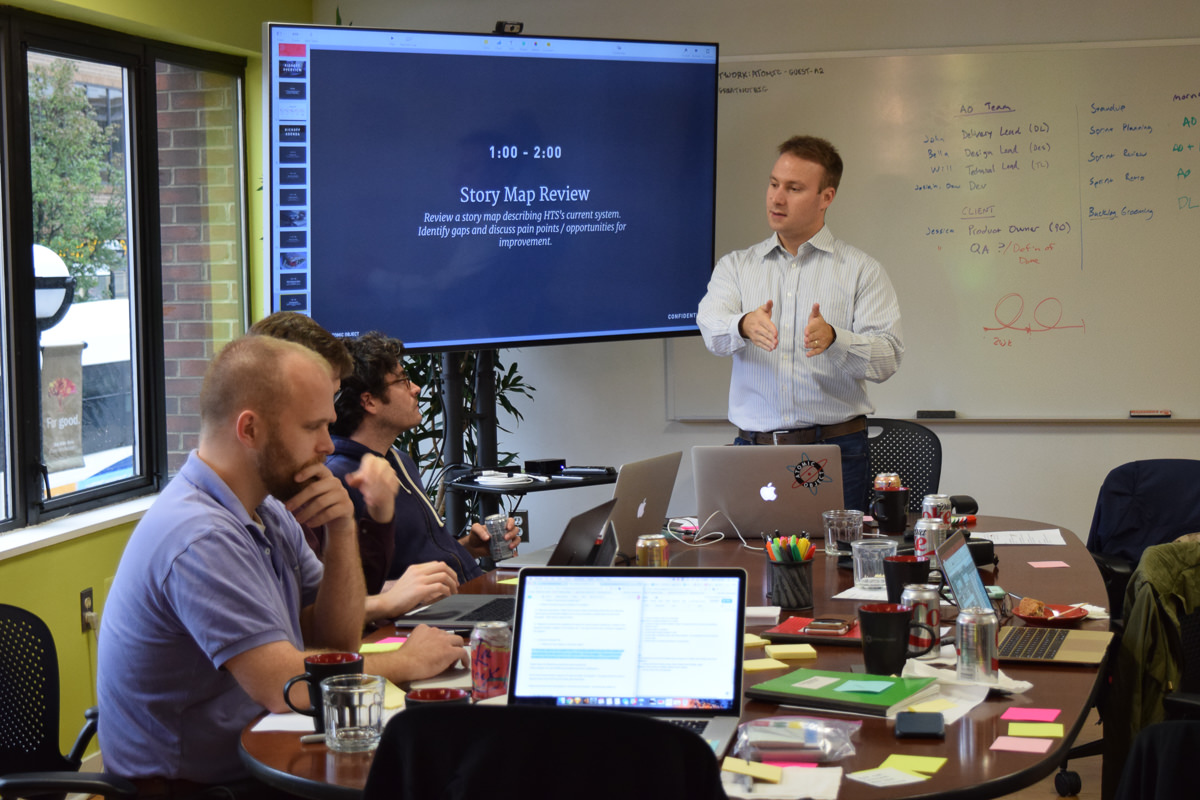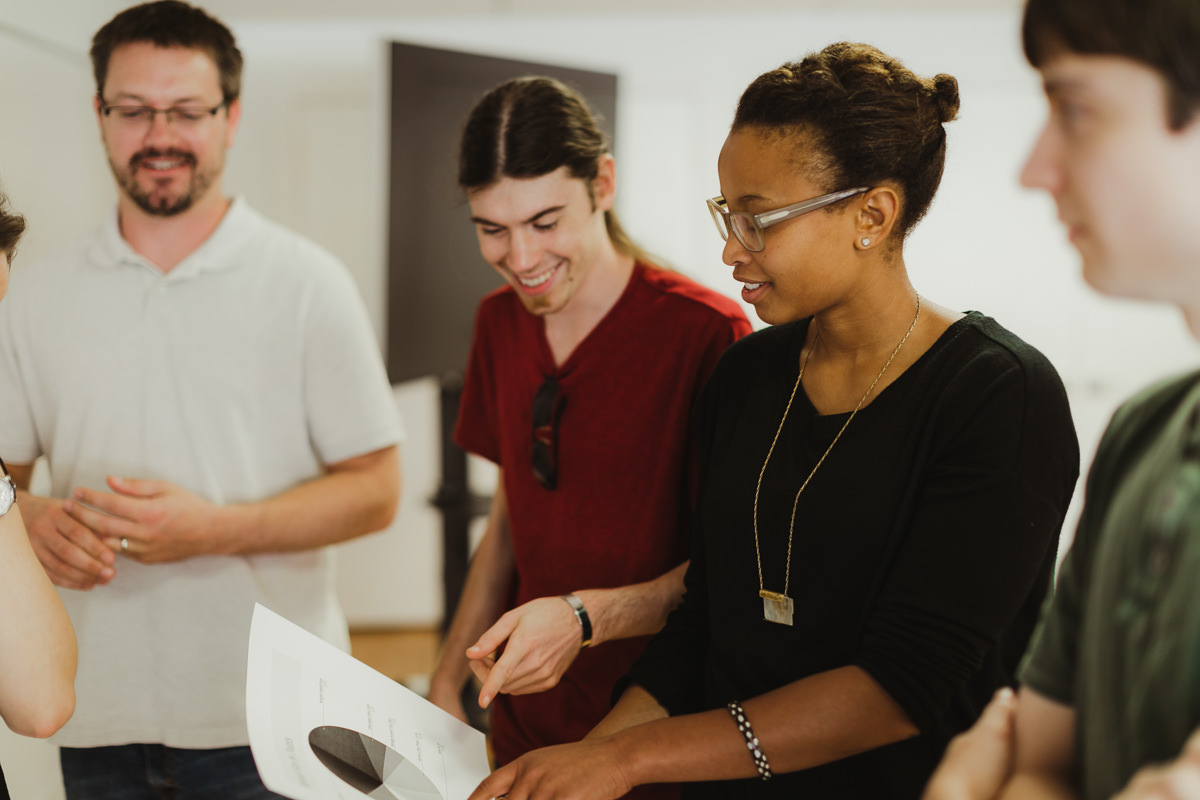Article summary

Once you’ve sold work to a new client, you can focus all your attention on doing good work, right? Not exactly.
Before you simply drop the client into the mix, it’s a good idea to invest some time in your relationship.
Think about what your client and their team need to know. Listen to them. Make sure they feel valued and appreciated. Thoughtful client onboarding can cement the new relationship you’re building—assuring this new partner of your respect and further earning their trust.
Of course, you don’t need to reinvent the wheel. Take a page from your employee onboarding process. The two share a lot of goals: communicating culture and practices, getting new people acquainted with the team, making sure everyone knows where the bathroom is, etc.
We’ve been thinking carefully about our client onboarding process at Atomic’s Ann Arbor office. I spoke with a few members of our team to learn about the approach they’ve developed.
1. Be honest about what they should expect.
Jonah Bailey, Managing Partner: Preparing clients for a custom software project starts during the sale process. In that time, we talk openly and honestly about risk. We share candidly that, in a lot of cases, there are going to be moments when we’re going to have to trust each other, and it’s going to be hard, but we’re going to get through it together.

2. Get the client and the team aquainted.
Jonah: The day that the client meets the leaders of their team for the first time is very significant. We usually do that before the main kickoff meeting. We try to go to the client’s place of business, see first-hand what they’re doing, and connect with their technical team who might not make it to the kickoff meeting. We get some firsthand information about the technologies or integrations they control that we’ll be working with. Our goal is to start to build trust.
3. Prepare for the kickoff.
Avery Williamson, Delivery Lead: To prepare for the project kickoff, I make sure that we send the agenda early. Sometimes we send a rough agenda, and then after we’ve done more research, we send them a more detailed one. Before we meet, I email the clients our team’s biographies and let them know what to bring for the on-site kickoff meeting—we ask them not to bring their computers.
Leading up to that, we do some market research about them, so that we’re savvy. We can contextualize their opportunities by understanding what’s happening in the marketplace, what they’ve shared about their goals and vision—that helps us ask good questions. We’ll prep all the members of Atomic project team to come up with questions from their own technical perspective.
I like to follow up after the kickoff, allowing them to share and giving them an open line of communication. I try to make them feel that we’re experts, and that we’re open to anything that might need to be addressed.
4. Make the client feel welcome and in the know.
Amy Burke, Delivery Lead: When the client arrives at our office on the first day, we work hard to make them feel welcome. We have Kelly, our office coordinator, create goody bags for each member of the client team. She does a lot that helps the first day go smoothly from a facilities perspective, and helping people feel heard and well cared-for from the jumping-off point.
Not all of our clients come in knowing a ton about software, so one of my goals on the first day is to talk about shared language. I sometimes share a “20-minute introduction to Agile software development.” Going over some general concepts that are important to know up front keeps people from feeling overwhelmed as we dive into their project.
I encourage the whole team to join the meeting so that the team can share context when they start the project, and the developers can use that context later on. Even though it’s an expensive meeting, it’s important to invest that time to make sure everyone’s on the same page.

5. Map out the first few months.
Jonah: Our projects begin with a Research, Design, and Planning (RDP) Phase, in which the design team and the Delivery Lead work together to scope the project. Depending on the complexity of the project, that could last two weeks to three months—or it could represent the entire engagement.
The RDP is carefully framed as an iterative process. We don’t want to map out three months’ of work at the beginning, because that’s a ton of planning for things that may not be relevant after the first week. We need to be nimble and change decisions on the fly. Once development starts, there’s a much more regular rhythm, where the client is able to see and test working software at least every two weeks.
After the kickoff, we ask our clients to commit to predictable future meeting times, so that they know when to take time in their schedules for backlog meetings and reviews. This helps us prevent scheduling back-and-forth. We let clients know that backlog grooming is usually when we discuss priorities and risk on a more regular and frequent cadence. That’s the avenue where the questions around expectations are surfaced and discussed.
6. Create social connections.
Amy: The relationship building at the beginning of our engagement with clients is important. The clients already know our managing partners through our sales process, and it’s important that the sales team makes the handoff to the project team to continue that good relationship they’ve built.
Once the project kicks off, I think it’s important that Delivery Leads go out to lunch with the client to discuss things outside the project. The meetings are so rich that they don’t necessarily involve pleasantries, and taking time to build that relationship far exceeds the cost of a lunch.
An Evolving Ability
At Atomic, finding client success has always been our mission, and we like to set that in motion from Day One.
Take the time to be thoughtful and intentional about introducing the client to their new team and familiarizing them with the way your company works. You’ll find, as we do, that the investment will pay off!

